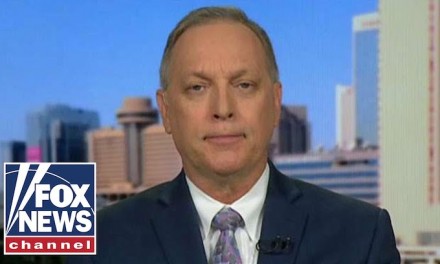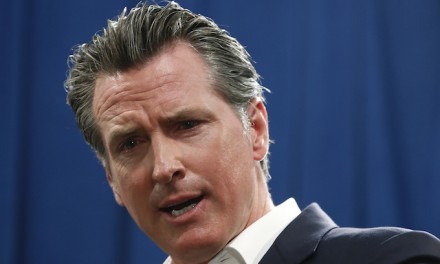(The Center Square) – California Gov. Gavin Newsom’s May budget proposal still falls $7 billion short of a balanced budget for fiscal year 2024-2025, according to the state-funded, non-partisan Legislative Analyst’s Office. This new budget, called the May Revision, is a marked improvement from earlier assessments from the LAO that said the 2024-2025 deficit could be as high as $73 billion.
“The May Revision puts the state on better fiscal footing and makes substantial progress toward structural balance. By pulling back substantially on one-time and temporary spending, as well as making some ongoing reductions, the Governor’s May Revision shrinks the state’s projected deficits from around $30 billion (our December 2023 estimates) to an average of less than $10 billion (our estimates today),” wrote the LAO in its multi-year budget report released today.
Newsom’s May Revision proposes $15.2 billion in cuts, $4.2 billion use of reserves, $14.8 billion in program expansion pauses and shifts, and $7.5 billion from borrowing and non-tax revenues to produce what his office says is a $3.4 billion surplus for the 2024-2025 fiscal year.
The LAO, meanwhile, slightly disagrees, saying, “Under our office’s revenue and spending projections, and assuming the Governor’s May Revision policies are adopted, the budget problem for this year is $7 billion larger. Put another way, the Legislature would need to take $7 billion in additional budget actions to balance the budget.”
Should the legislature prove unwilling to undertake more cuts than the governor has proposed, it could deploy more of the state’s $22.5 billion in reserves, to plug this year’s deficit, but this could place the state on rocky footing in coming years.
“For example, in 2026‑27, revenues would need to be at least $11 billion higher than the May Revision forecast in order for the budget to be balanced,” wrote the LAO. “Overall, this figure shows that the state budget is likely balanced over the next couple of years, but a budget problem becomes more likely in later years.”
At the end of its report, the LAO warned of potential difficulty raising taxes beyond the political — Newsom promised “no new taxes” to address the current deficit.
“The state’s fiscal condition also faces other uncertainties. This includes, for example, tax proposals that have interactions with measures potentially appearing on the November ballot,” wrote the LAO. “These proposals specifically could present downside pressure on the budget picture.”
The LAO appears to be referencing the Taxpayer Protection and Government Accountability Act, or TPA, a qualified ballot measure California Democrats — including Newsom — are suing to block from the November ballot.
The TPA would close a 2017 court-created loophole decision that has been used to pass and propose local taxes introduced by citizens’ groups, not local government, and require that statewide tax increases receive a two-thirds vote in each body of the state Legislature and a majority of voters at the ballot box, and limit fees charged by governments to what is necessary to provide the service. The TPA would also apply retroactively to taxes and fees adopted after January 1, 2022, with governments having one year to ask voters to approve new taxes passed since then, but at the higher threshold.
Currently, statewide tax increases require a two-thirds vote from both chambers of the legislature or a majority vote by voters. At the local level, general taxes are supposed to be approved by the majority of voters and special taxes by two-thirds of voters, but courts — in the aforementioned loophole — have been allowing special taxes put forward by citizens to pass with simple majorities, not a two-thirds vote.
The TPA joins two competing measures from California Democrats to reduce voting thresholds for increasing taxes and issuing new debt, making the November election a key determinant of the state’s fiscal future.
The first measure, ACA 1, would allow property to be taxed at more than 1% of its value and bonds to be issued with the support of 55% of voters, instead of the 1% property tax cap and the two-thirds voting requirement now in effect. The second measure, ACA 13, would require that any measure that would increase the voter approval threshold for state or local measures to pass would have to pass by that higher threshold. If ACA 13, which needs a majority of voters, passees, then the TPA would need two-thirds of voters to pass, even though the TPA and ACA 13 are on the same ballot.



















The philosophy and deliberate intensions of the treasonous, destructive, lying, dishonest Democrat Party – Big Controlling government, Over Tax and Over Spend.
The Democrat Party wins most of their followers because they are ill-informed and/or low intellect. (stupid)
Democrat’s propaganda or narrative works on an emotional level, not on the intellect level. The Democrat Party supporters are mentally subjective, Democrats believe how they Want Facts, Truth and reality to be. Not how they really are.
Grewsome has a very easy solution. He simply raises taxes (which he will probably do) and forces more people to leave Californication. What a disaster he is. And pray to God he isn’t elected to the Presidency.
Just imagine the damage he could do if states could print their own money like the federal failures do to cover their incompetencies. Another reason why Newsom should never be allowed to run for President. Newsom is just the Old sum of all socialist failures which history has proven is just an accelerated ride to national disaster.
OF COURSE. DEMS love raising taxes..